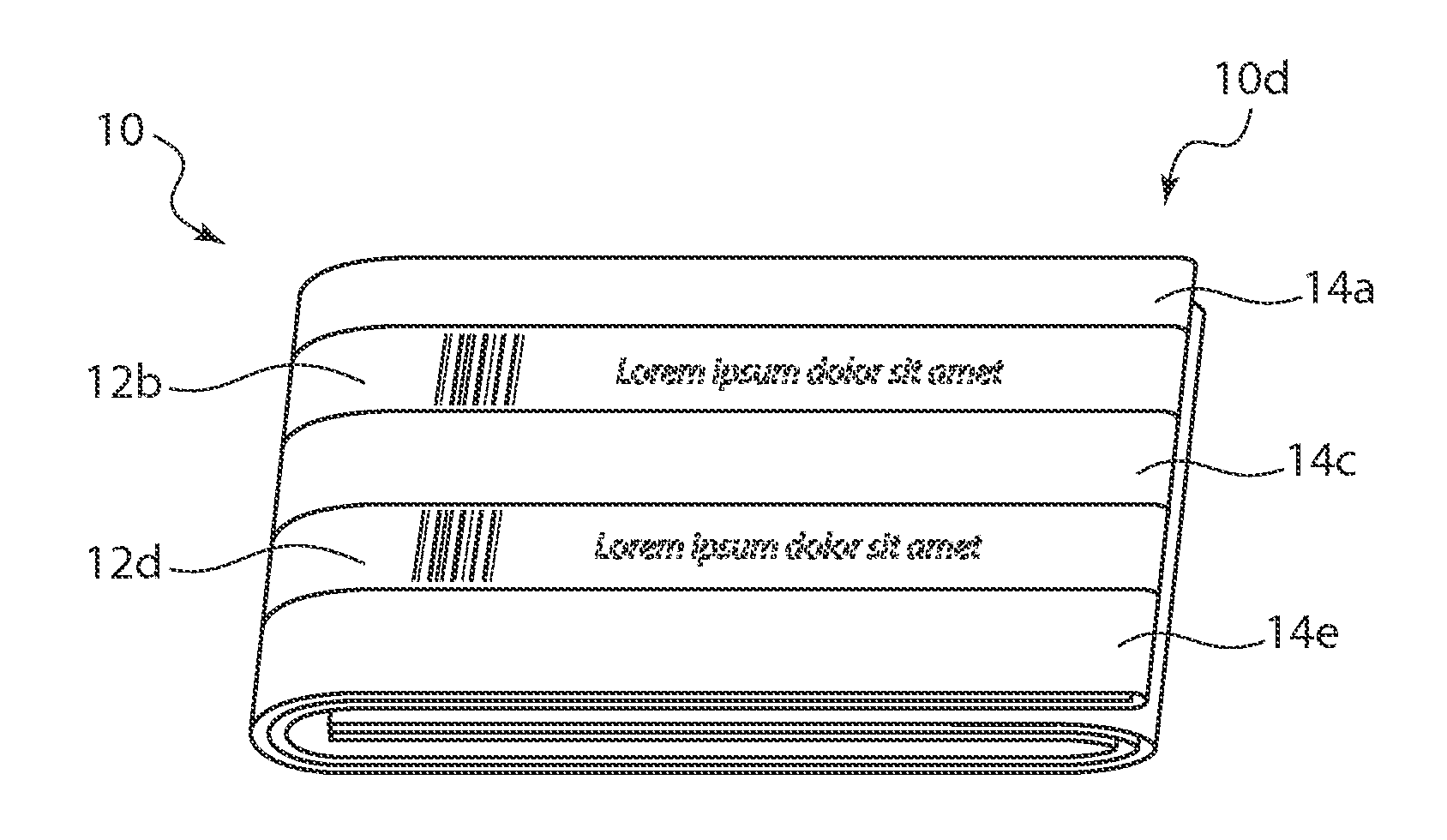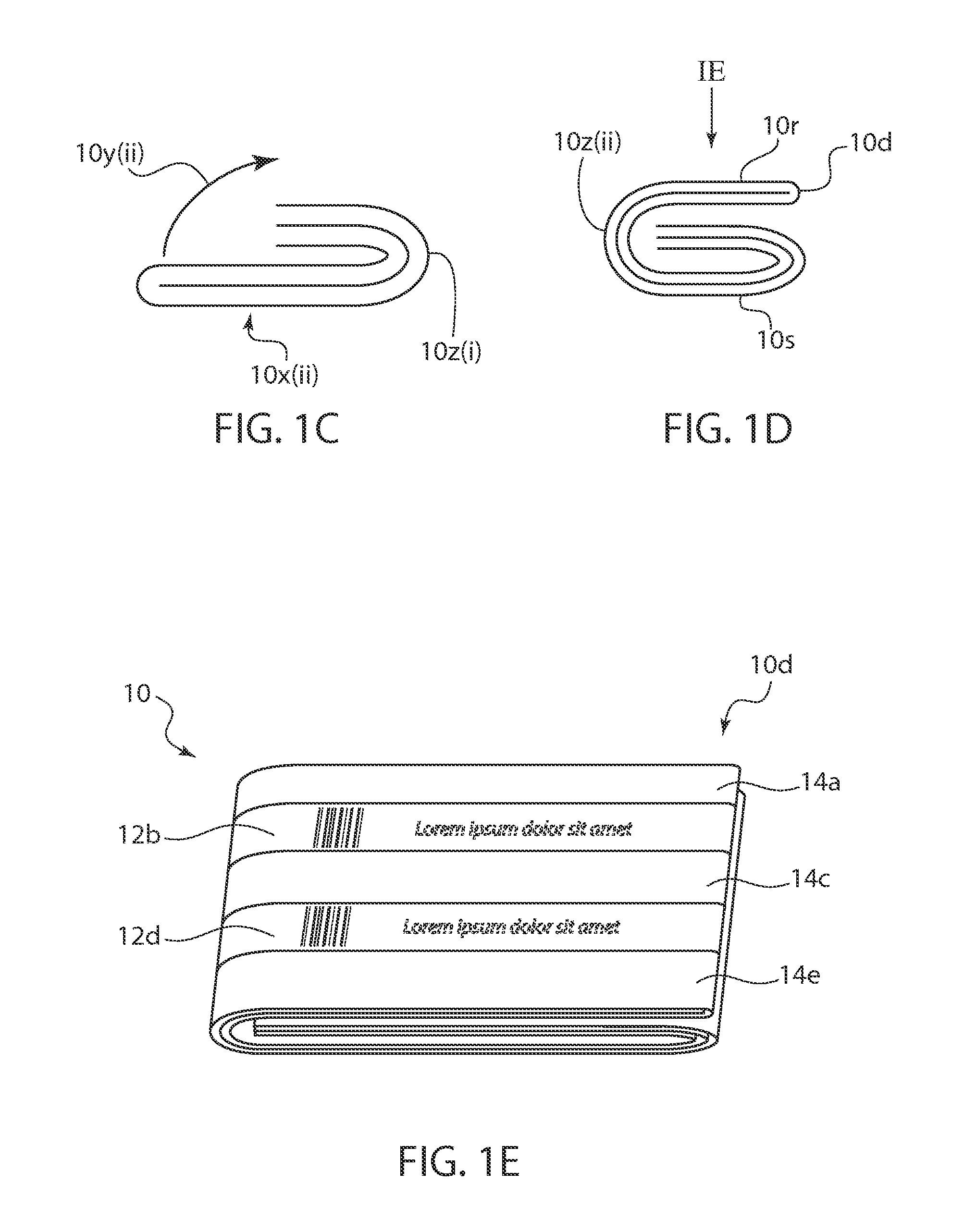Method for manufacturing extended content booklet labels
a technology for booklet labels and extended content, applied in the direction of identification means, paper/cardboard containers, instruments, etc., can solve the problems of unlabeled product containers and limited overall effectiveness
- Summary
- Abstract
- Description
- Claims
- Application Information
AI Technical Summary
Benefits of technology
Problems solved by technology
Method used
Image
Examples
Embodiment Construction
[0042]In this application a “booklet” means an individual instructional piece having a cover sheet, a back sheet and at least one internal sheet. A sheet is a piece of paper having two opposed pages. The smallest booklet featuring one cover sheet (2 pages), one internal sheet (2 pages) and one back sheet (2 pages) would have a total of six pages. Additional internal sheets can be added. A booklet with two internal sheets would have a total of eight pages.
[0043]Booklets may be formed from one large sheet and one medium sheet by folding the large sheet in half and inserting the medium sheet into the fold. Such a booklet would have three sheets for a total of six pages.
[0044]The book may be formed by securing sheets and pages together at the binding by adhesive, glue or other suitable connection means. The book may have perforations at various locations on different sheets, to provide pages which can be removed from the book.
[0045]Booklets may be formed from one large sheet folded mult...
PUM
| Property | Measurement | Unit |
|---|---|---|
| Size | aaaaa | aaaaa |
| Adhesivity | aaaaa | aaaaa |
| Area | aaaaa | aaaaa |
Abstract
Description
Claims
Application Information
 Login to View More
Login to View More - R&D
- Intellectual Property
- Life Sciences
- Materials
- Tech Scout
- Unparalleled Data Quality
- Higher Quality Content
- 60% Fewer Hallucinations
Browse by: Latest US Patents, China's latest patents, Technical Efficacy Thesaurus, Application Domain, Technology Topic, Popular Technical Reports.
© 2025 PatSnap. All rights reserved.Legal|Privacy policy|Modern Slavery Act Transparency Statement|Sitemap|About US| Contact US: help@patsnap.com



